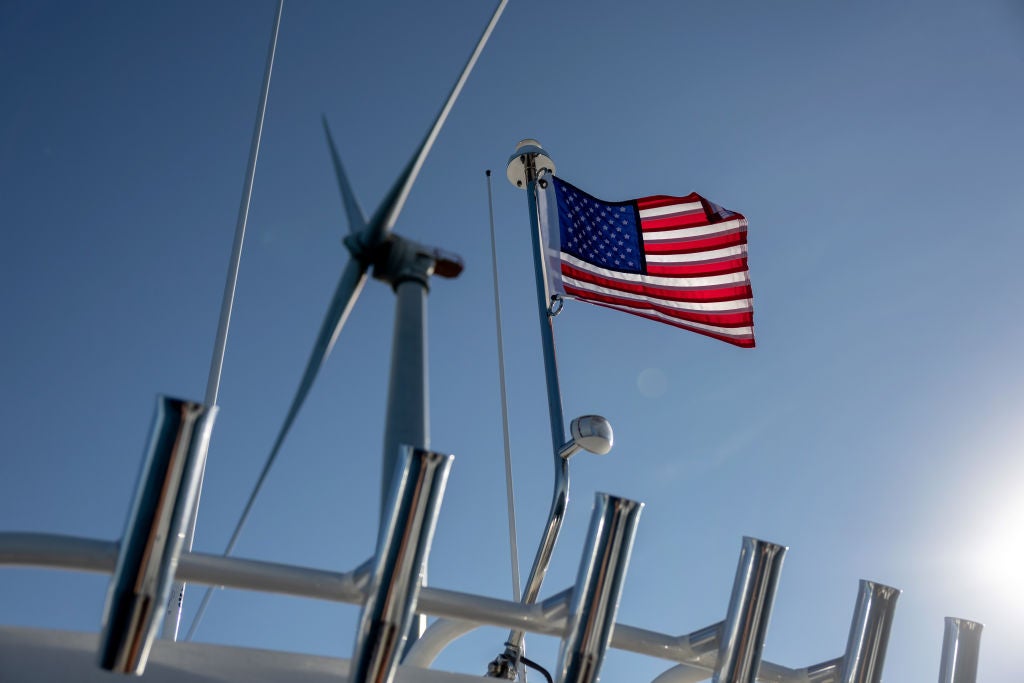The US suffered another serious setback to its offshore wind plans just days into 2024, when oil majors bp and Equinor announced they had cancelled a 2022 deal to provide power to the state of New York via the 1.2GW Empire 2 Wind project.
Trouble for bp and Equinor’s project began last October when the New York Public Service Commission refused their request to raise Empire Wind’s strike price by two-thirds, from $107.50 per megawatt-hour (MWh) to $177.84/MWh. As a result of this refusal the deal collapsed, with both companies blaming higher borrowing costs, rising inflation and supply chain disruptions as reasons for the deal falling through.
This failure signals more trouble for the US’ flailing offshore wind sector, with it appearing increasingly unlikely that Joe Biden will meet his target of achieving 30GW of offshore capacity by 2030. Although inflation has “stung offshore wind projects across the world”, the pain is “acute for the backers of US projects that are trying to navigate a supply chain that has yet to develop”, say analysts.
Since 2021, the total number of signed US offshore wind contracts has fallen by two-thirds, according to data from Energy Monitor’s parent company, GlobalData.
Given that US offshore wind capacity stood at just 0.42GW in 2023, according to GlobalData, meeting Biden's 30GW target for 2030 would require a dramatic scale-up of capacity.
As it currently stands, the US derives a negligible proportion (just 0.001%) of its total power generation from offshore wind, compared with 0.8% in China and 16.4% in the UK – a world leader in offshore wind – according to GlobalData.
Despite this low baseline, the US has “one of the most ambitious project pipelines” in the world, with more than 50GW (from 32 leases) in active development, according to a 2023 report from the Global Wind Energy Council (GWEC). The report notes that the majority of this capacity remains in early-stage development.
A brief history of failed projects
Another significant dent in the US’ offshore wind fortunes occurred in October last year, when Danish wind energy developer Ørsted said it was cancelling two major projects in New Jersey: Ocean Wind 1 and 2. Ørsted cited “high inflation, rising interest rates, and supply chain bottlenecks impacting our long-term capital investments” as its reason for pulling out.
Prior to this, developers in New England had cancelled power purchase agreements (PPAs) for three offshore wind projects across Massachusetts and Connecticut, citing similar concerns. These three projects would have supported 3.62GW of power being brought online between 2025 and 2027, according to GlobalData. Together with Ocean Wind 1 and 2, this adds up to one-fifth of Biden’s 2030 target. Without these projects, the US’ projected offshore capacity stands at just 22GW.
Other projections for US offshore wind are even more pessimistic. In October, following New York State’s refusal to allow bp and Equinor to raise their strike price, some analysts cut their 2030 forecast for US offshore wind by 29%, from 23.1GW to 16.4GW.
US offshore wind: “Fundamentally broken”
One of the “major highlights” of Joe Biden’s’ 2022 Inflation Reduction Act (IRA) has been its impact on the US offshore wind industry, according to the GWEC. It cites several IRA tax credits specifically aimed at offshore wind manufacturing and infrastructure in its annual assessment of the industry. Nonetheless, rising costs have blunted the IRA’s potential impact, and in November last year, bp’s head of gas described the US offshore wind industry as “fundamentally broken”.
Coming from such a low baseline, the US has felt the impact of supply-chain cost pressures more than other countries like the US and China. Nonetheless, data from GlobalData reveals that offshore wind is struggling to stay afloat globally, with annual global installed capacity falling sharply from 18.3GW in 2021 to just 3.8GW in 2023.
Most (58%) of experts exclusively polled by GlobalData last October and November cited the rising cost of raw materials and projects as the primary reason for this global decline, while 22% said it was due to a “lack of government push to increase the consumer power prices”.
One-fifth of respondents cited “a lack of government intent towards offshore wind to attract investments” as the main reason behind falling installations, according to GlobalData.









